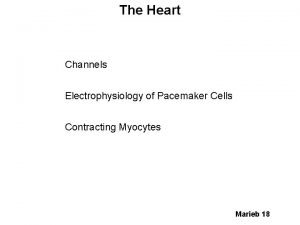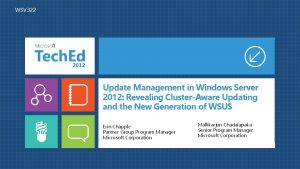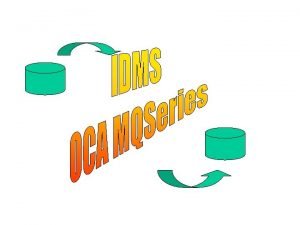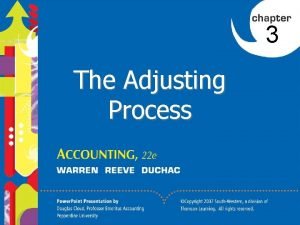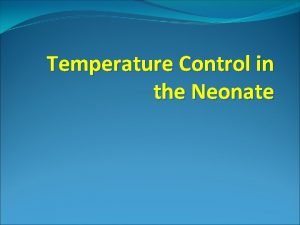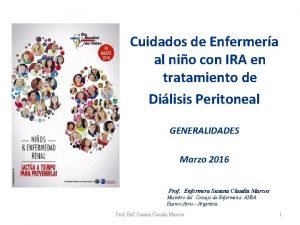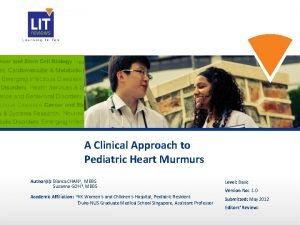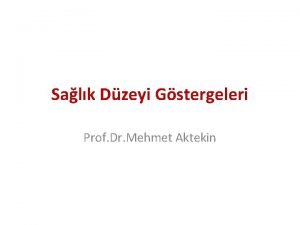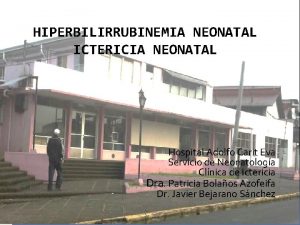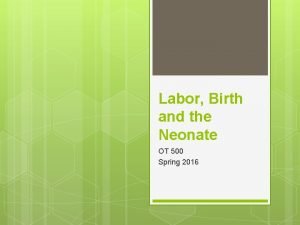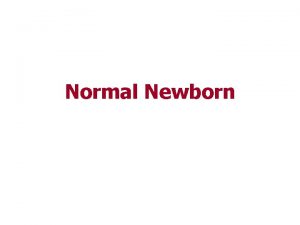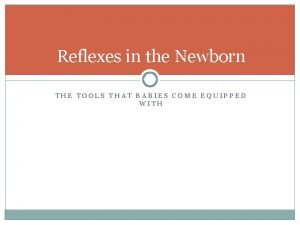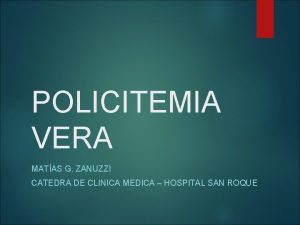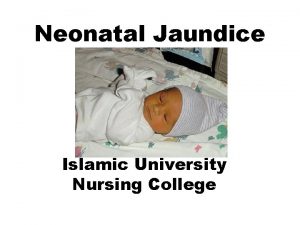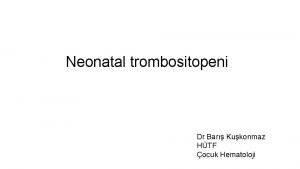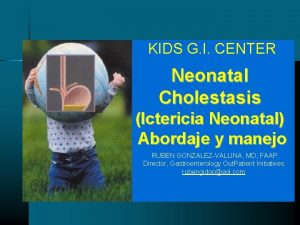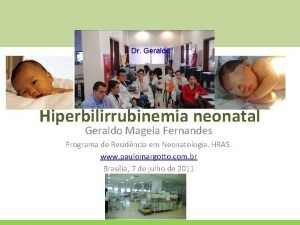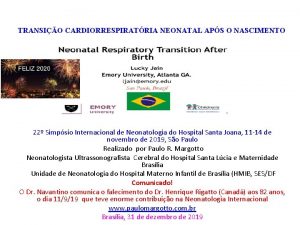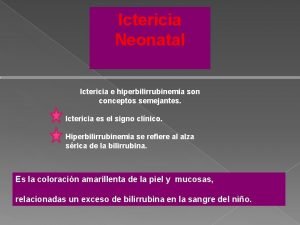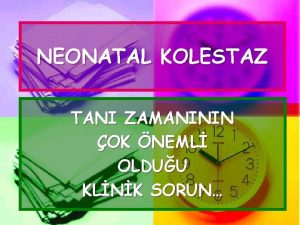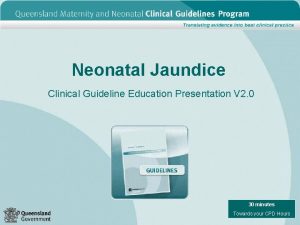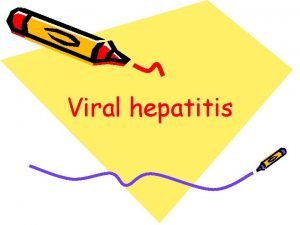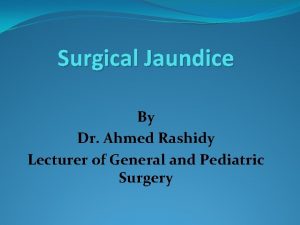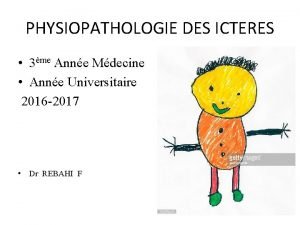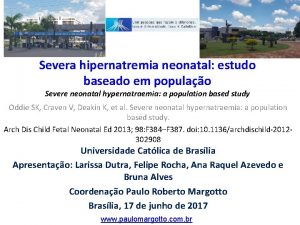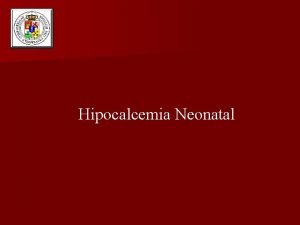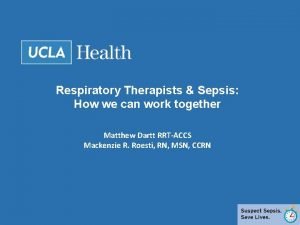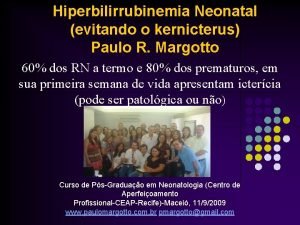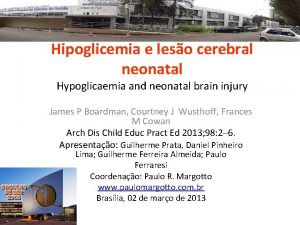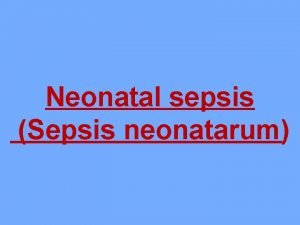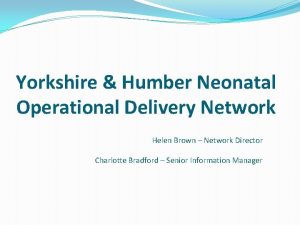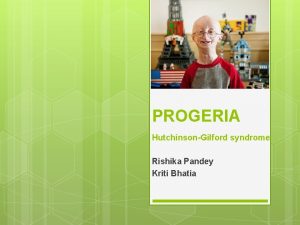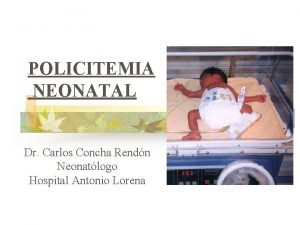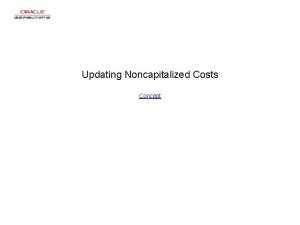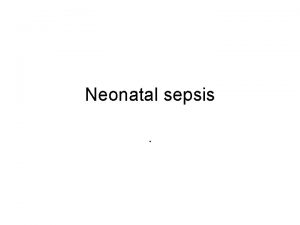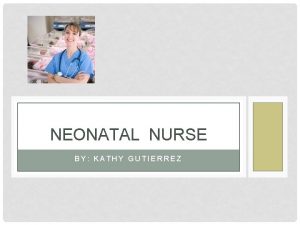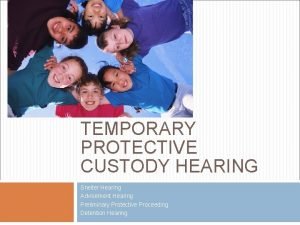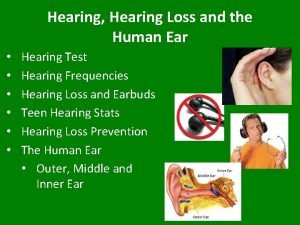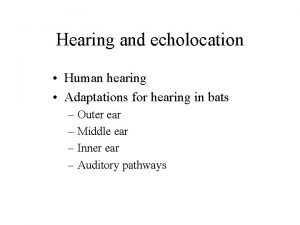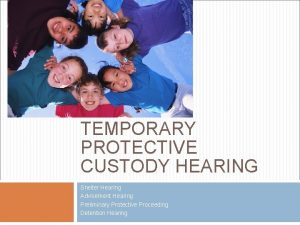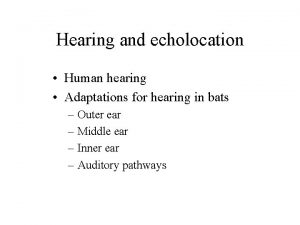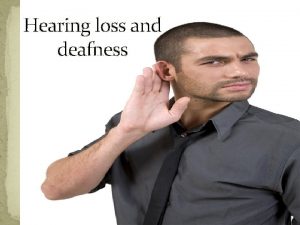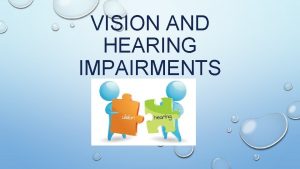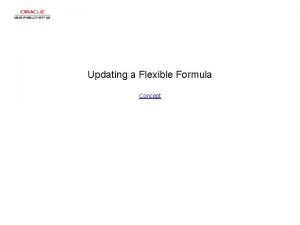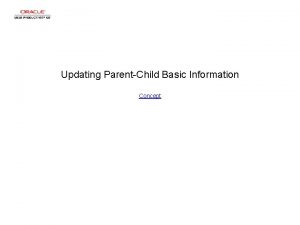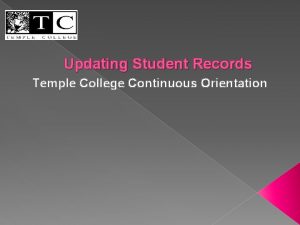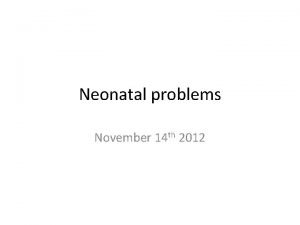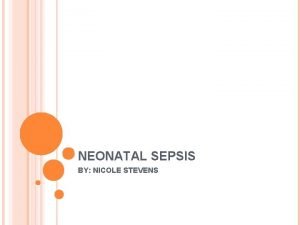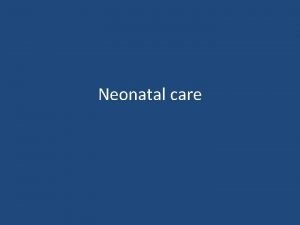UPDATING THE ELECTROPHYSIOLOGY IN NEONATAL HEARING EVALUATION Jos




































- Slides: 36

UPDATING THE ELECTROPHYSIOLOGY IN NEONATAL HEARING EVALUATION José J. Barajas de Prat IAPA Summer School 2008 Neonatal Hearing Screening and Auditory Neuropathy Berlin, Germany April 10 th and 11 th

WHAT SHOULD THE IDEAL INFANT HEARING ASSESSMENT? Must be applicable to neonates and children n Measure Hearing sensitivity from 250 -8 k. Hz n Assess hearing sensitivity for mild to severeprofound hearing loss n Objectively detect an infant´s response to sound n

ELECTROPHYSIOLOGIC TECHNIQUES Click and tone- burst evoked ABR n Evoked potentials for tones that are amplitude and/or frequency modulated n n Auditory-steady state responses (ASSR) AMLR and 40 Hz n Cortical AEPs n

LIMITATIONS OF CONVENTIONAL EVOKED POTENTIAL TESTS n Click ABR: n n TB-ABR: n n Cannot be used to estimate the 4 frequency (500 -4000 Hz) audiogram Lenghtly procedure, relies on subjective analysis of waveforms AMLR, 40 Hz and CAEP: n n Unreliable during natural or sedated sleep on infants and children CAEP methods with quietly awake infants may hold promise for estimates of thresholds and speech feature discrimination abilities

AUDITORY STEADY STATE RESPONSE (ASSR) Can be recorded in neonates and children n Are evoked by frequency –specific tonal stimuli n Correlate with elevation in the hearing thresholds n Can be objectively evaluated n Are used to estimate an audiogram n

Jose J. Barajas. (1985). Auditory Brainstem and Middle Latency Response in Early Detection of Hearing Loss in Infants. New dimensions in otorhinolaryngology – head and neck surgery (1); pp 289 -292.

40 Hz Jose J. Barajas. (1988). Middle Latency and 40 Hz Auditory Evoked Responses in normal hearing children: 500 Hz thresholds. Scand Audiol Supp 30: 99 -104

MEASUREMENTS OF SIGNAL AND NOISE AT DIFFERENT RATES Picton TW, John MS, Dimitrijevic A, Purcell D. Human auditory steady-state responses. Int J Audiol. 2003 Jun; 42(4): 177 -219.

UPDATING THE ELECTROPHYSIOLOGY IN NEONATAL HEARING ASSR in newborns n AEP and early hearing aid fitting and validation n ASSR n CAEP (Obligatory Cortical Auditory Evoked Potentials) n n AEP: Cochlear Implants validation

ASSR IN NEWBORNS n ASSR characteristics in newborns: The neonatal ASSR n Amplitude Development in Infants n Detection of ASSR in the neonatal infant period n ASSR threshold in babies n

THE NEONATAL ASSR AVERAGED AMPLITUDE FOR NORMAL- HEARING INFANTS AND ADULTS Luts H, Desloovere C, Wouters J. 2006. Clinical application of dichotic multiple-stimulus auditory steady-state responses in high-risk newborns and young children. Audiol Neurootol. ; 11(1): 24 -37.

AMPLITUDE DEVELOPMENT Johns MS, Brown DK, Muir PJ, Picton TW (2004). Recording Auditory Steady State responses in young infants. Ear Hear Dec, 25 (6) 539 -53.

DETECTION OF ASSR IN THE NEWBORN Is determine by: n Amplitude of the response: n n n Stimulus type Modulation rate Carrier frequency Electrode configuration Amplitude of the background noise: n n n State of arousal EEG frequency range Test duration

OPTIMAL MODULATION RATE FOR EACH CARRIER 500 Hz 1500 Hz 4000 Hz Rickards FW, Tan LE, Cohen LT, Wilson OJ, Drew JH, Clark GM. (1994). Auditory steady-state evoked potential in newborns. Br J Audiol. ; 28(6): 327 -37.

ASSR THRESHOLDS IN BABIES Threshold values n Threshold changes in infancy n Development mechanism affecting ASSR n ASSR vs Tone burst ABR in neonates n

ASSR THRESHOLD IN BABIES Luts, H. “Diagnosis of Hearing Loss in Newborns. Clinical Application of Auditory Steady. State responses”. Director: Prof. Dr. J. Wouters. Katholieke Universiteit Leuven, Faculty of Medicine, 2005

ASSR THRESHOLD CHANGES IN INFANCY Rance, G. & Tomlin, D. (2006). Maturation of ASSR in nomal babies. Ear & Hearing, 27, 20 -29.

DEVELOPMENTAL MECHANISMS AFFECTING ASSR THRESHOLD IN INFANCY Rance G, Tomlin D. (2006). Maturation of auditory steady-state responses in normal babies. Ear Hear. ; 27(1): 20 -9.

ASSR & TONE-BURST ABRs IN NEONATES Rance G (2008). Assr in Neonates & Infants. In Auditory Steady-State Response Generation, Recording, and Clinical Applications. Gary Rance

HEARING LEVEL PREDICTION Sensation level n Regresion formula describing ASS behavioral regression n

ASSRs IN HEARING IMPAIRED BABIES Rance G (2008). ASSR in Neonates & Infants. In The Auditory Steady-State Response: Generation, Recording, and Clinical Applications. Edited by Gary Rance. In review.

HEARING LEVEL PREDICTION For older children and adult subjects ASSR/behavioral threshold correlation has been empirically established n In normally developing babies this relationship is NOT well defined. n ASSR threshold variance in babies is higher than for adults (> 30 d. B) n Ear canal differences. n Neural development. n

CONCLUSION Maturation factors affect ASSR. n Normally hearing babies present lower amplitudes than adults and older children. n Neonatal period threshold higher and more variable. n Need to determine typical response levels for babies of different ages and developmental stages. n

UPDATING THE ELECTROPHYSIOLOGY IN NEONATAL HEARING EVALUATION ASSR in newborns n AEP and early hearing aid fitting and validation n ASSR n CAEP (Obligatory Cortical Auditory Evoked Potentials) n n AEP: Cochlear Implants Evaluation

LOUDNESS AND ASSR Zenker Castro F. , Barajas de Prat JJ & Larumbe Zabala E. (2008): Loudness and Auditory Steady State responses in normal hearing subjects. International Journal of Audiology. In press.

HEARING AID PRESCRIPTION FROM ASSR Zenker F. & Barajas J. J. (2008) ASSRs: Their role in hearing device fitting. In: The Auditory Steady State response: generation, recording and clinical application. Edited by Gary Rance.

UPDATING THE ELECTROPHYSIOLOGY IN NEONATAL HEARING ASSR in newborns n AEP and early hearing aid fitting and validation n ASSR n CAEP (Obligatory Cortical Auditory Evoked Potentials) n n AEP: Cochlear Implants validation

TYPES OF AER THAT HAVE BEEN USED TO OBJECTIVELY EVALUATE HEARING AIDS FUNCTION Auditory Brainstem Responses (ABR) n Auditory Steady state Responses (ASSR) n Obligatory Cortical Auditory Evoked Potential (CAEP) n

Why are we using obligatory cortical responses to evaluate hearing aid function? More likely to correlate well with perception. n Can be elicited by a range of speech phonemes. n Reliable present in awake young infants. n Can be present in children with auditory neuropathy/dys-synchrony. n

CAEP Suzanne C. Purdy et al. (2004). Aided cortical auditory evoked potentials for hearing instrument evaluation. 3 rd Pediatric Conference “A Sound Foundattion through early amplification”. Chicago, Illinois

MATURATIONAL EFFECTS ON CORTICAL EVOKED RESPONSE Ponton et al. (2000) Maturation human central auditory system activity: evidence from multi-channel evoked potentials. Clinical Neurophysiology 111 (2): 220 -236

CAEP CAN ELICITED BY DIFFERENT SPEECH PHONEMES IN NEWBORNS D. KURTZBERG 1989

HEARING AID GAINS AND CAEP AMPLITUDE Suzanne C. Purdy et al. (2004). Aided cortical auditory evoked potentials for hearing instrument evaluation. 3 rd Pediatric Conference “A Sound Foundattion through early amplification”. Chicago, Illinois

P 1 IN HEARING AIDS Anu Sharma, Emily Tobey, Michael Dorman, Sneha Bharadwaj, Kathryn Martin, Phillip Gilley, Fereshteh Kunkel. Central Auditory Maturation and Babbling Development in Infants With Cochlear Implants. ARCH OTOLARYNGOL HEAD NECK SURG/VOL 130, MAY 2004.

P 1 IN COCHLEAR IMPLANTS Anu Sharma, Michael F. Dorman, Andrej Kral. (2005). The influuence of a sensitive period on central auditory development in children with unilateral and bilateral cochlear implants. Hearing Research 203, 134– 143.

WELCOME! EFAS 2009 TENERIFE SPAIN
 Abap insert
Abap insert Marieb18
Marieb18 Sccm cluster aware updating
Sccm cluster aware updating Batch updating (for oca & db)
Batch updating (for oca & db) The updating of accounts is called the adjusting process.
The updating of accounts is called the adjusting process. Energy triangle neonates
Energy triangle neonates Parâmetros iniciais ventilação mecânica neonatal
Parâmetros iniciais ventilação mecânica neonatal Reflejos en el período neonatal
Reflejos en el período neonatal Hoja de balance hidrico en enfermeria
Hoja de balance hidrico en enfermeria Pda murmur
Pda murmur Neonatal ölüm hızı
Neonatal ölüm hızı Zonas de kramer ictericia neonatal
Zonas de kramer ictericia neonatal Neonatal reflexes
Neonatal reflexes Neonatal period is defined as
Neonatal period is defined as Reflex child development
Reflex child development Poliglobulia
Poliglobulia Pathologic jaundice
Pathologic jaundice Neonatal alloimmün trombositopeni
Neonatal alloimmün trombositopeni Neonatal cholestasis definition
Neonatal cholestasis definition Bilirrubina valor de referência recém-nascido
Bilirrubina valor de referência recém-nascido Triade neonatal
Triade neonatal Zonas de kramer ictericia neonatal
Zonas de kramer ictericia neonatal Neonatal kolestaz
Neonatal kolestaz Pathologic jaundice newborn
Pathologic jaundice newborn Neonatal jaundice
Neonatal jaundice Exceptions to courvoisier law
Exceptions to courvoisier law Non verbal pain scale
Non verbal pain scale Physiopathologie de l'ictère néonatal
Physiopathologie de l'ictère néonatal Hipernatremia severa
Hipernatremia severa Hipocalcemia neonatal
Hipocalcemia neonatal Neonatal sepsis pathophysiology diagram
Neonatal sepsis pathophysiology diagram Icterícia neonatal valores de referência
Icterícia neonatal valores de referência Hypoglicaemia
Hypoglicaemia Neonatal sepsis
Neonatal sepsis Yorkshire and humber neonatal network
Yorkshire and humber neonatal network Kriti bhatia
Kriti bhatia Formula de oski y naiman
Formula de oski y naiman

